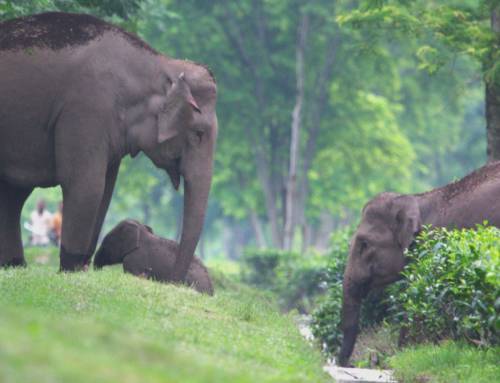Author: Shruti Suresh
India has one of the eight “hottest” biodiversity hotspots in the world. Iconic species such as the Bengal tiger and the Asiatic elephant are of international conservation concern. However, India’s forests are not home to just tigers, there are several carnivores that compete for food and territory. Here is a peek into a groundbreaking paper that studied three large carnivore species — the Bengal tiger, the Indian leopard and the Asiatic wild dog, and uncovered how they coexist in high densities in Nagarahole national park.
In 1995, Dr. K Ullas Karanth from the Centre for Wildlife Studies and Dr. Melvin E Sunquist from the University of Florida published a paper on the food preferences of the three carnivores and the factors that influence prey selection in Nalkeri Reserved forest, inside Nagarahole National Park. They were looking to understand how three predators that lived in the same forest selected their prey and if there were any overlapping preferences.
To understand prey preferences, they conducted a study on prey densities by walking transects in their study area. They first categorised the prey in terms of age, sex, body size and abundance. Then they calculated the populations of herbivores such as chital, sambar, muntjac, gaur, wild pigs, hanuman langurs, bonnet macaques (monkeys) and more. Based on the population sizes and classes of different species, the authors predicted a certain amount of predation.
Dr. Karanth and Dr. Sunquist then collected and studied a large number of scats (faeces) of the tigers, leopards and dholes in the study area. The scat were carefully washed and strained to separate remains of hair, hooves, bones etc. Studying scat allows you to understand a range of information about the animal such as age, health, genetic information, diet (including the species of its prey). The scat study revealed the dietary choices of the carnivores and this was compared against the predicted results to gather what each carnivore preferred.
The scientists found that tigers, leopards and dholes had a similar preference of wild prey, despite the differences in their body sizes. All three carnivores selectively preyed on young animals as they couldn’t escape. The tigers of Nagarahole primarily predate on gaur and adult sambar, whereas leopards and dholes chose medium-sized prey, like chital. Tigers predated adult males in chital, so did dholes. Leopards are particularly remarkable climbers and seem to have an appetite for langurs. Wild boars weren’t regularly predated on by leopards and dholes due to their aggressive behaviour.
In a prey-rich habitat such as Nagarahole, Dr. Karanth and Dr. Sunquist found the predators to be selective in maximising the energy they would receive per kill over the number of animals they killed. When there were plenty of animals, the predators could afford to have preferences. If there were to be any destabilising factor such as forest cover loss, human interference or climate change, this would directly impact large carnivore communities their diets and their ability to coexist in tropical forests.
Original research article: Prey Selection by Tiger, Leopard and Dhole in Tropical Forests — Dr. K. Ullas Karanth and Dr. Melvin E. Sunquist — British Ecological Society, 1995
You can access the research paper here.
You can read the Kannada translation of this blog here.




